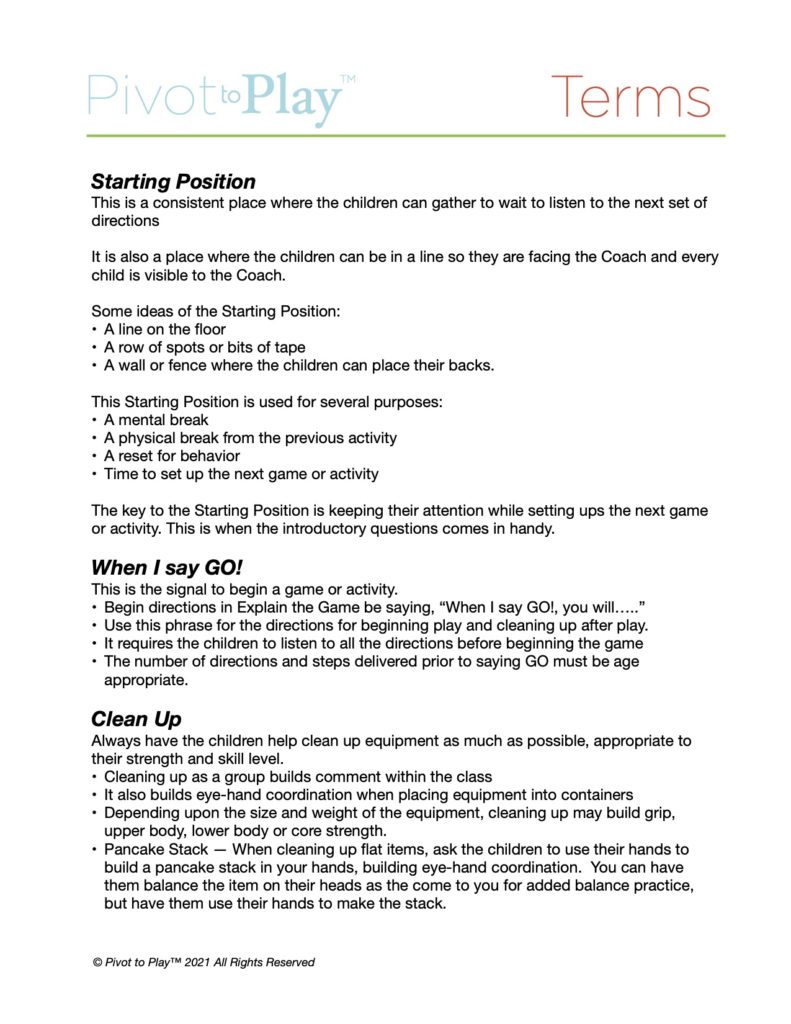Topic 7: Seeing is Believing & References

Lorax v. Onceler
With elementary aged children, you can easily start this game with two teams, one acting as the Lorax and one acting as the Onceler. When you use the introductory questions while setting up the game it is a fantastic use of time plus it holds their attention in what is actually a down time ripe for misbehavior. It is recommended that you add in the rule of no knees on the ground with elementary aged kids from the outset. Once they have played the game a couple of time as both Lorax and Onceler, it is fun to shake things up by asking them to play in a bear crawl!
With preschoolers, it is best to start this game in teams, everyone working together. Once you have run through their being Lorax and Onceler, add in the rule where they can’t put their knees on the ground and play a few more times. This is an example of giving them multi-step directions in bite sized pieces they can master. If you are teaching preschoolers over a long series of sessions, circling back to this game with 4 and 5 year olds later in the program and playing in teams will add an extra challenge.
Color Run
It is very easy to transition from “If You Are Wearing” to “Color Run” because children are already standing on colored spots. If you ask them to pick up the spot they are standing on and return to their Starting Position, then you can easily divide the group in half, moving half the group to the other side of your space on a designated line on wall.
“Color Run” is a great game for working on spatial, body and directional awareness, all Perceptual Motor Skills. Like “If You Are Wearing” it is also a great game for building aerobic strength, but there are also hazards. What is NOT demonstrated in the video is HOW to run. Children can get very excited in this game and forget to look where they are running. So it is important to review how to run by asking them leading questions while demonstrating. We like to ask them: “Is it a good idea to run like this?” While we are running looking behind us. Then we ask again, “Is it a good idea to run like this?” While we demonstrate running while looking down. Then we ask them, “What could happen?” Elementary aged kids will know, but most preschoolers will not. With preschoolers we show them by running (carefully!!!!) while looking backwards, and running into a teacher or column. We then remind them they must look where they are running because while they are running one way, some friends will be running the other way and if they don’t watch where they are going they could run into each other!
“Color Run” for 3 year olds is appropriate with just one color, while older preschoolers could have two colors and elementary aged kids can have three or more colors. In the video we show several examples of objects that can be used in this game: spots, balls, hula hoops, scarves. With a group of elementary aged kids you can see we gave them several different colored hoops to carry, requiring additional upper body, core and grip strength.
Mastering chaos and walking this thin line between boring and losing control is where the magic happens when leading successful sessions with the children. Throughout this certification you will continue to develop your knowledge base and comfort with this thin line, helping you lead kids into a great experience that will help them develop physical literacy, personal confidence and the strengths and skills they need to be the best they can be.
References
Faigenbaum, A, Wescott, W. ACE Youth Fitness Manual. American Council on Exercise San Diego, 2013 p 80
Cairney, J et al. Developmental coordination disorder and aerobic fitness: Is it all in their heads or is measurement still the problem? American Journal of Human Biology 2006. 18, 66-70
Lopes V. et al, 2012. Correlation between BMI and motor coordination in children. Journal of Science and Medicine in Sports 15, 1, 38-43
D’Hondt E. et al 2011 Gross motor coordination in relation to weight status and age in 5 to 12 year old boys and girls: a cross sectional study. International Journal of Pediatric Obesity, 6, 2, 556-564
Faigenbaum, A, Wescott, W. ACE Youth Fitness Manual. American Council on Exercise San Diego, 2013 p 45
Rink, J (2010) Teaching Physical Education for Learners (6th ed) New York: McGraw Hill. P96
Faigenbaum, A, Wescott, W. ACE Youth Fitness Manual. American Council on Exercise San Diego, 2013 pX
Faigenbaum, A, Wescott, W. ACE Youth Fitness Manual. American Council on Exercise San Diego, 2013 p 116
Faigenbaum, A, Wescott, W. ACE Youth Fitness Manual. American Council on Exercise San Diego, 2013 p116
